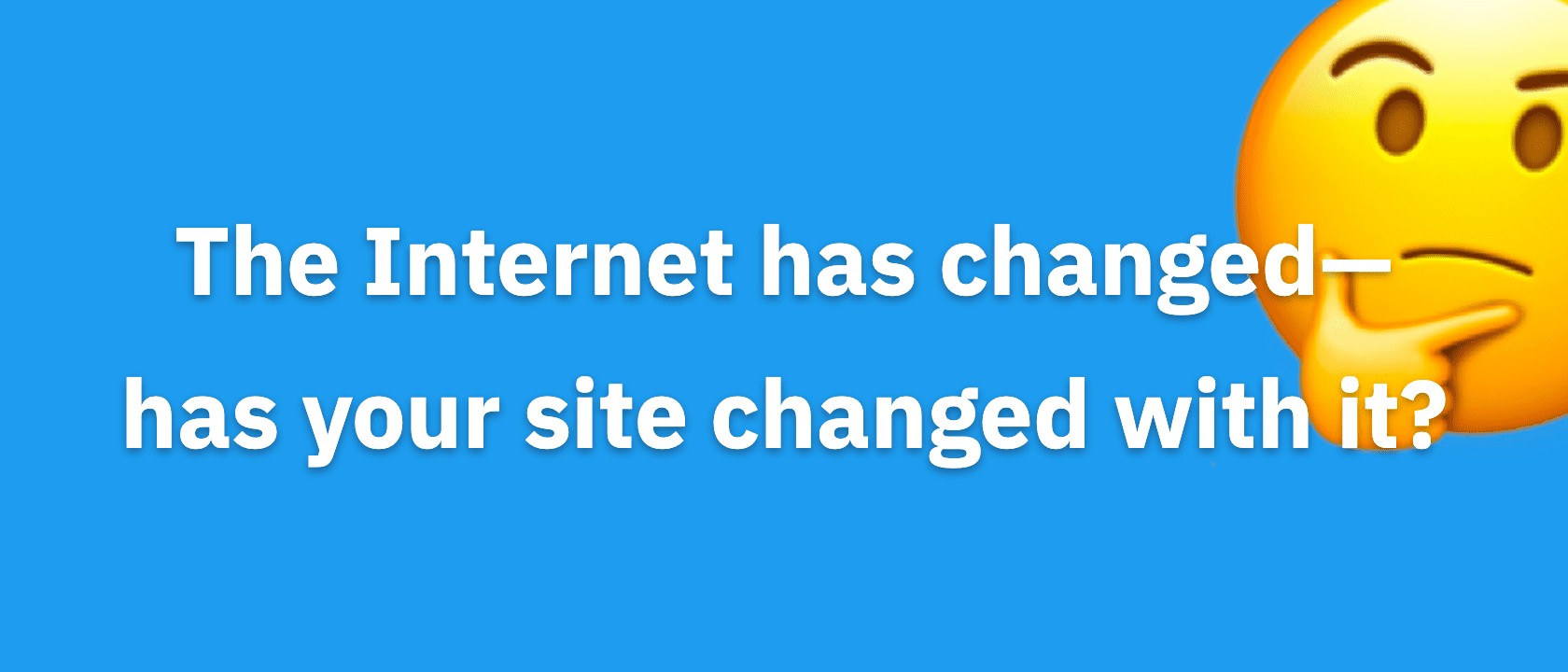This article is deprecated! Any technical information refers to software versions that are now obsolete. Please visit the DIYthemes Blog for current updates, or check out the old Thesis Blog for a treasure trove of website marketing insights.
We’ve just released Thesis 1.8.3, which incorporates new WordPress features like the drag-and-drop image uploader and the best WP Network support in the business.
Of course, I’ll tell you all about the improvements to 1.8.3 below, but I also know that what you really want is news about the forthcoming Thesis 2.
Naturally, I’ve got you covered. Read on for enlightenment!
First, let’s take a look at the new goodies in Thesis 1.8.3…
1. Thesis Now Loads Faster Than Ever
Now that Google uses site speed as one of the factors in their algorithm, you need a fast-loading website for the best possible chance of ranking higher in search engines.
So, we’ve added smarter CSS controls that improve your site’s speed, efficiency, and out-of-the-box score on tools like ySlow and Google PageSpeed, the industry standards for web performance.
Here’s the lowdown:
- Thesis 1.8.3 makes 2 http requests for stylesheets instead of 3 (style.css and layout.css have been combined into one for efficiency). Less http requests means faster load times.
- If you’re a performance fanatic like me, you can reduce this to a single http request by visiting Site Options → Stylesheet Options and un-checking “Use Design Mode.” This will combine ALL your stylesheets, including custom.css, into one CSS file.
2. Uploading a Header Image Just Got Easier…
We incorporated the new WordPress drag-and-drop image uploader into the Thesis header image and favicon uploaders. Easy just got easier.
3. Thesis Now Supports WP Network
We added full WP Network (formerly known as multi-site) support. Thesis 1.8.3 detects if you’re using WP Network, and it responds by creating /custom folders for each active blog.
Other theme “frameworks” support WP Network functionality, but there’s a problem with their implementations because they use child themes (Thesis does not).
Basically, if two active blogs are using the same child theme, any changes to that child theme will affect both blogs. This means that if one blog wanted a blue background and another one wanted a pink background, this would not be possible—not cool!
Every site on a WP Network should be able to operate independently of all others, and Thesis is the first framework to make this possible.
4. Complete GravityForms CSS Support
The last new goodie in Thesis 1.8.3 is enhanced GravityForms CSS support. If you’re using GravityForms (our favorite premium form plugin), Thesis will detect this and add the necessary CSS to your stylesheets without you having to lift a finger!
5. Of Course, We Always Sweat the Details…
In addition to the new features listed above, we also made some minor tweaks to enhance performance, including:
- Thesis admin scripts are now suppressed on all non-Thesis admin pages.
- We’ve upgraded widget code for tighter integration with WordPress, and while we were at it, we added new display options to the Thesis search widget.
- Thanks to feedback from developers, we were able to resolve everything that triggered warnings when using
WP_DEBUG.
And now, for the news I know you’re all waiting to hear…
What’s up with Thesis 2?
As you know, Thesis has already changed the game once by introducing the revolutionary idea of theme frameworks. Thesis 2 is going to change the game again by becoming the world’s first full-fledged website template and design system.
Now in its 17th month of development, Thesis 2 has been an incredible undertaking thus far. Here are a few milestones from the journey:
- In March of 2011, I finished the first draft of the new HTML template system. In the time since, I’ve rewritten this sucker 3 times, improving performance and reliability with each rewrite. This thing is now rock solid and ready for the big time.
- In April and May of 2011, I developed a new API for working with WordPress custom post meta data. If you’re not a developer, this will sound like jargon, but if you are a developer, you’re going to swoon over the new API (hint: You’ll be able to develop sophisticated, data-driven sites with ease).
- In June of 2011, we hired our first full-time Thesis developer, Matt Gross. In addition to his work on data security, Matt has been working on the new Thesis file system, which is an integral part of Thesis 2. Matt also brought you this wonderful 1.8.3 update and an unmatched love for Texas barbecue.

Matt Gross studying code... or is that brisket?
- During September and October of 2011, I built the first draft of the new Thesis CSS system. After using it for a month, I decided that it wasn’t good enough to carry the Thesis name, so I’ve been working on a smarter CSS system ever since.
- Also in October, DIYthemes got its first office space in Austin, TX, and the development team now works out of this office. Typical days last from 9am to 7 or 8pm, and—I hate to brag—the place smells ever-so-faintly of bacon.
- Naturally, I’ve also been building a new Thesis interface throughout the development process. What can you expect here? Simplicity, clarity, and speed. You’re gonna dig it.
Of course, the above points are a 35,000-foot overview of the actual development process. Thesis 2 is a sophisticated machine that is going to streamline everything you know about building websites, deploying designs, and adding functionality.
The only question left is…
When can you get your hands on Thesis 2?
Right now, I don’t have an exact answer. But know this:
The current version of Thesis is still the leading framework when it comes to lightning-fast loading times, pixel-perfect typography, and search engine rankings.
So what’s left before Thesis 2.0 comes out? Instead of keeping it a secret, I decided to reveal our plans and progress. Here’s what we have left to do:
I’m still building the CSS system (though it’s almost done), and Matt and I still have work to do on the new Thesis file system. Also, I’m still hammering on the Thesis Skin system to ensure a simple and awesome user experience. Once we’ve got all the pieces working properly, we’re going to bolt on automatic updates, and then we’ll be ready to launch.
Guessing how long this will take is useless. Instead, we’re going to bust our tails every day until it’s done—this way, we’ll know that we finished the project as quickly as we could.
I know you’re all excited about Thesis 2 and want it as soon as possible—heck, I’m right there with ya! I want you to know that I sincerely appreciate your enthusiasm and support, and pretty soon, we’re going to bring you more magic than you ever thought possible.
What else is DIYthemes up to?

Alex “the kid” Mangini
Over the last few months, we’ve released awesome email signup forms, specialized opt-in widgets, custom Feature boxes, and more.
How’d we do it? Our in-house Thesis design wizard, Alex Mangini, made it all possible, and “the kid” is just getting warmed up.
Additionally, the DIYthemes expert support team has continued to add more helpful tutorials to RTFM, successfully making our support documentation one of the most extensive on the market.
Finally, we’ve got the DIYthemes blog, where Derek Halpern has been spinning gold and teaching you how to improve your website.
Even though the blog is barely over a year old, it has attracted more than 25,000 subscribers and a ton of traffic. In fact, the DIYthemes site as a whole attracted more than 700,000 unique pageviews in January.
And the best part? DIYthemes is just getting started. Are you in?
